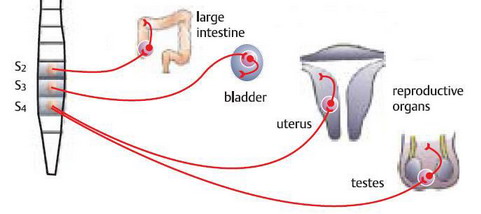|

|

|
Tarlovcysts or pudendal nerve pain
Tarlov Cysts or Pudendal
Problem Tarlov cysts and pudendal nerve damage can cause IC and other pelvic pain symptoms. These are the clues that should make you and your doctor take a closer look:
Tarlov Cysts
Your symptoms started after an accident or a fall. OR
You feel worse when you’re sitting in a chair.
You feel worse after you stand up for a while.
You have more pain when you bend, squat, cough, or lift.
You feel better after you lie down for a while or when you first wake up.
Pudendal Nerve Damage
Your symptoms started after an accident or a fall. OR
You have regularly engaged in sports or activities that put pressure on your tailbone and perineal area. For example, you biked, lifted weights from a sitting position, or you had a job that required prolonged sitting.
You feel worse when you’re sitting in a chair.
You feel better when you stand up, lie down, or sit on a toilet seat or a cutout cushion. (Prolonged standing, however, can aggravate pain.)
You have (or your patient has) pain while sitting, during intercourse, after ejaculation or in your anus without reason.
You have incontinence for stool, gas or urines.
You have vulvodynia, persistant sexual arousal, or impotence.
Your problems began after biking, a fall on the coccyx, a delivery, a surgery in the area, a pelvic trauma.
Maybe you have a "pudendal neuropathy".
(other names: "pudendal canal syndrome" or "pudendal nerve entrapment").
Pudendal neuralgia, pudendal neuropathy and pudendal canal syndrome (PCS)
Compression or stretching (if there is an abnormal perineal descent) of the pudendal nerve in the Alcock's canal and/or in the "clamp" between the sacro-spinal and the sacro-tuberous ligaments can induce the so called "pudendal canal syndrome" (PCS) or "pudendal neuropathy" or "pudendal nerve entrapment" (PNE) described by Professor Ahmed Shafik in 1991.
The "pudendal canal syndrome" includes:
- perineodynia (pain)
- hypo or hypersensibility of the perineum
- anal incontinence
- urinary incontinence
- impotence
- probably also: cystalgia, frequency, sexual arousal syndrome, painful ejaculation...
Pudendal neuralgia (only one part of the pudendal canal syndrome) has been described as a very severe pain on one side of the perineum typically increased during sitting and reduced on a toilet seat.
But the pain (perineodynia) produced by pudendal neuropathy can be different:
- proctalgia : repetitive acute anal pain of short duration
- bilateral pain
- light pain or itching on one side of the perineum without visible skin disease (at the beginning)
- vulvodynia
- dyspareunia
- cystalgia
Causes:
- bicycle (the most classical one)
- fall on the coccyx
- constipation with dyschesia (induces perineal descent)
- delivery
- pelvic trauma
- traction on the pelvis during orthopedic surgery
- sacro-spinal fixation
Diagnosis:
- Typical history: pudendal neuropathy must be searched in each perineological examination
- Clinical examination:
- three clinical signs: asymetry of sensibility
positive "skin rolling test"
pain at the level of the pudendal nerve
- perineal descent (more than 2 cm with a Perineocaliper) increases the risk of PCS
- EMG exploration

|
|